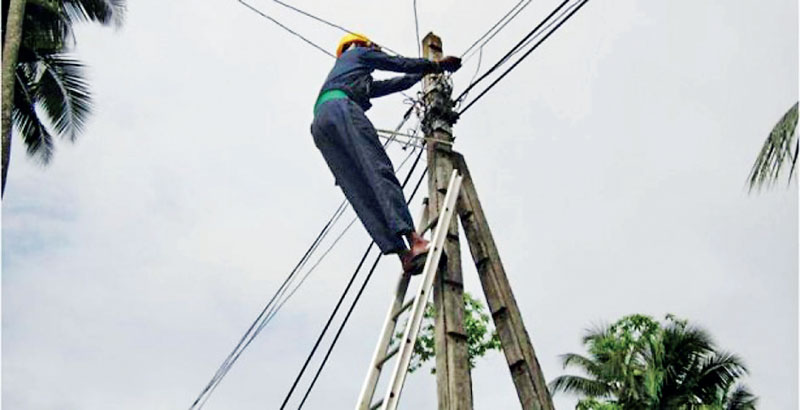Monday Dec 08, 2025
Monday Dec 08, 2025
Thursday, 16 May 2024 00:10 - - {{hitsCtrl.values.hits}}

It is critical that the Government puts a stop to its conservative and traditional approach to telecoms regulation and handles it in a way that will ensure that digital connectivity spurs the development of the nation
 Sri Lanka’s Telecommunications Act first came into force in 1991. It was subsequently amended in 1996. There have been no further amendments or revisions to the Act since then, although there have been several (but failed) attempts to update this legacy Act over the years. An amended Bill has now been sent to Parliament for consideration and is expected to be debated by the country’s lawmakers in the next few weeks.
Sri Lanka’s Telecommunications Act first came into force in 1991. It was subsequently amended in 1996. There have been no further amendments or revisions to the Act since then, although there have been several (but failed) attempts to update this legacy Act over the years. An amended Bill has now been sent to Parliament for consideration and is expected to be debated by the country’s lawmakers in the next few weeks.
One would think that the legislation governing one of the most dynamic and critical sectors should have kept up with the times, but here we are 28 years later, attempting to maintain a historical artefact and supplement it with piecemeal amendments, in the hope that this will help sustain digital development for the next decade and more.
Evolution of telecoms and connectivity
Most countries have seen their approach to telecommunications legislation change dramatically in the past 20 years. With the convergence of broadcast and media and telecoms, and emergence of new technologies, new players, new business models, new devices and new services, the old way of regulating and licensing telecoms serves no place in the digital future that we envision for ourselves.
Malaysia was one of the earliest to recognise this convergence and the need for the regulatory authority to be well-equipped and forward-looking and issued its Communications and Multimedia Act in 1998. Similarly, Singapore has continued to amend its Telecoms and Broadcast laws over the years, and created a newly merged entity, the Info-communications Media Development Authority (IMDA) to oversee developments in these sectors through the issuance of the Info-communications Media Development Authority Act in 2016.
Sector regulation in Sri Lanka
In Sri Lanka’s case, there have been no significant developments in legislation or governance within the telecoms or broadcast sector since 1996. The Telecommunications Regulatory Commission of Sri Lanka (TRCSL) was bestowed with, what were considered at the time, the powers of a relatively strong and independent authority to regulate the sector under the original Telecoms Act in 1991, but in practice it is has evolved into a weak regulator over the years. Political meddling and a revolving door policy for appointments at the top have seen it lose credibility and direction. As a result, Sri Lanka is ranked by the International Telecommunications Union (ITU) as having a G2 (Generation 2) regulatory model meaning that the regulator and regulatory environment operates with a “low level maturity [in] legal and governance frameworks”. In contrast, Singapore and Malaysia are ranked as G4 regulatory environments equipped with leading or advanced digital governance capacity.
This doesn’t mean that there have been no attempts to keep abreast with new developments and update the regulatory and governance frameworks. Attempts have been made to bring in a new Broadcast Act to no avail. Similarly, the Telecoms Act has also come up for revision many times in the last two decades. I am aware of an attempt in 2010 and subsequently in 2016 or thereabouts, but these efforts went nowhere. Perhaps there were other opportunities that preceded these, all of which clearly came to naught.
Sri Lanka’s digital future…
In today’s world of tech cos and telcos, shared infrastructure, spectrum and other resources, smart cities and devices, and the ever-increasing demand for private networks, old approaches to telecoms licensing and regulation don’t work. These are outdated control and command practices, built around sustaining legacy models of oligopolistic rights over critical resources and opportunities.
Fixed and mobile operators are no longer the kings of connectivity and are but one of the many service providers along a long connectivity value chain. The sooner regulators and Governments recognise this and start treating service providers this way, the better. New age businesses and partnerships call for new age approaches to regulation.
It’s a given that the existing Telecoms Act and the TRCSL need a complete overhaul to reflect the realities of today and to remain relevant and responsive in the foreseeable future. With the newly issued National Digital Economy Strategy 2030 there is a pronounced interest in streamlining Sri Lanka’s digital progress, presenting a timely opportunity to address the governance piece. But a look at the proposed amendments in the Bill tabled in Parliament indicates a lack of will to do just that.
Granted, the amendments recognise the need for new forms of licensees beyond just fixed and mobile service providers. It’s been years since tower companies and other types of infrastructure providers have been asking for legal recognition under the law. Going a step further, the National Digital Economy Strategy calls for the introduction of a unified licensing regime but this is not reflected in the amendments.
The bill also takes a traditional approach to oversight, calling for the licensing of any kind of device that is designed or intended to transmit or emit radio waves. What this means in effect is that every smart home appliance, connected car, digital medical equipment and the like will need to be licensed by TRCSL, which is a seemingly unreasonable requirement. Similarly, the amendments require TRCSL to approve any kind of tariff plan across all operators and providers, when regulatory forbearance can and should be practiced with ease nowadays.
…hangs in the balance
It is unfortunate that the process to amend this bill has not been transparent and open. Given how critical of a sector this is to Sri Lanka’s development goals, one would have expected that the proposals for amendments would have been consulted on, with the TRCSL and/or the Ministry of Technology spearheading several rounds of public discussion and debate in the run up to the development of the Bill. If they did, many of these poor proposals could have been addressed before the Bill made it to Parliament.
Digital connectivity is the one industry that underpins the development of the wider economy. Everything from healthcare, education, security, commerce and trade, tourism, social and development issues will be impacted by the advancement of this sector. It is the reason why we have just launched the Digital Economy Strategy with much fanfare.
It is critical that the Government puts a stop to its conservative and traditional approach to telecoms regulation and handles it in a way that will ensure that digital connectivity spurs the development of the nation. Converged markets and services require converged authorities and approaches to governance. The amended Bill has no place in Sri Lanka’s digital future and should be sent back to the drawing board for a proper re-draft. A process for soliciting feedback through open and public consultation should be the bare minimum requirement, before we proceed any further.
(The writer is an Independent Consultant and LIRNEasia Policy Fellow.)